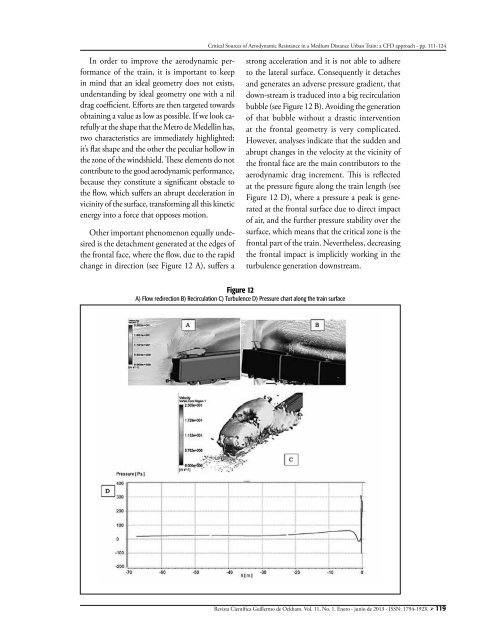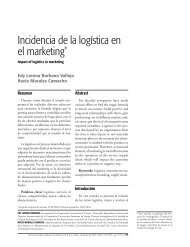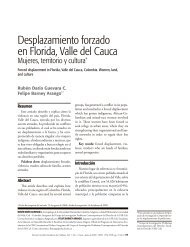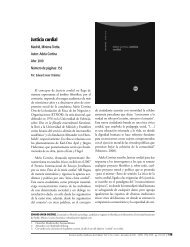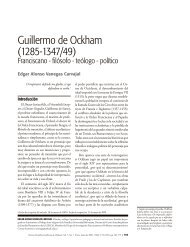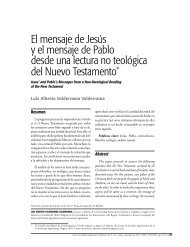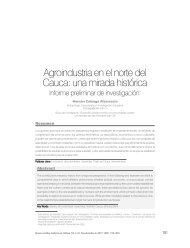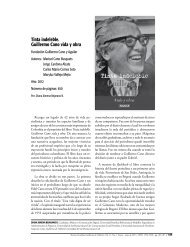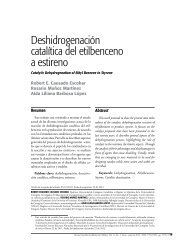Ciencias humanas, sociales y económicas - Universidad de San ...
Ciencias humanas, sociales y económicas - Universidad de San ...
Ciencias humanas, sociales y económicas - Universidad de San ...
You also want an ePaper? Increase the reach of your titles
YUMPU automatically turns print PDFs into web optimized ePapers that Google loves.
Critical Sources of Aerodynamic Resistance in a Medium Distance Urban Train: a CFD approach - pp. 111-124In or<strong>de</strong>r to improve the aerodynamic performanceof the train, it is important to keepin mind that an i<strong>de</strong>al geometry does not exists,un<strong>de</strong>rstanding by i<strong>de</strong>al geometry one with a nildrag coefficient. Efforts are then targeted towardsobtaining a value as low as possible. If we look carefullyat the shape that the Metro <strong>de</strong> Me<strong>de</strong>llin has,two characteristics are immediately highlighted;it’s flat shape and the other the peculiar hollow inthe zone of the windshield. These elements do notcontribute to the good aerodynamic performance,because they constitute a significant obstacle tothe flow, which suffers an abrupt <strong>de</strong>celeration invicinity of the surface, transforming all this kineticenergy into a force that opposes motion.Other important phenomenon equally un<strong>de</strong>siredis the <strong>de</strong>tachment generated at the edges ofthe frontal face, where the flow, due to the rapidchange in direction (see Figure 12 A), suffers astrong acceleration and it is not able to adhereto the lateral surface. Consequently it <strong>de</strong>tachesand generates an adverse pressure gradient, thatdown-stream is traduced into a big recirculationbubble (see Figure 12 B). Avoiding the generationof that bubble without a drastic interventionat the frontal geometry is very complicated.However, analyses indicate that the sud<strong>de</strong>n andabrupt changes in the velocity at the vicinity ofthe frontal face are the main contributors to theaerodynamic drag increment. This is reflectedat the pressure figure along the train length (seeFigure 12 D), where a pressure a peak is generatedat the frontal surface due to direct impactof air, and the further pressure stability over thesurface, which means that the critical zone is thefrontal part of the train. Nevertheless, <strong>de</strong>creasingthe frontal impact is implicitly working in theturbulence generation downstream.Figure 12A) Flow redirection B) Recirculation C) Turbulence D) Pressure chart along the train surfaceRevista Científica Guillermo <strong>de</strong> Ockham. Vol. 11, No. 1. Enero - junio <strong>de</strong> 2013 - ISSN: 1794-192X ‣ 119


